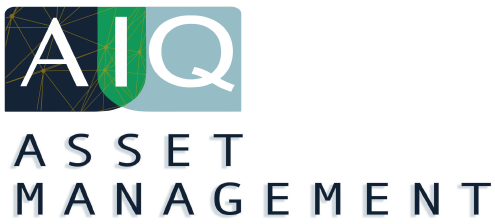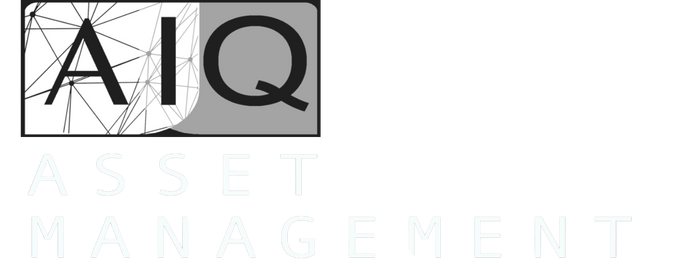By AIQ Asset Management
•
September 23, 2025
Executive Summary General Economic Overview The U.S. economy is navigating a complex landscape as we round out the third quarter, with recent data reflecting a delicate balance between resilience and fragility. Economic growth is slowing, inflation is moderating but persistent, consumer spending remains robust, and the labor market, while weakening based on reported numbers, may be showing tentative signs of stabilization. Economic Overview Recent economic indicators suggest a mixed yet cautiously optimistic outlook. Economic activity has been moderating with GDP rising 1.5% for the first half of the year versus growth of 2.5% last year. The August Consumer Price Index (CPI) rose 0.4% month-over-month, pushing the annual rate to 2.9%, driven by persistent shelter costs, particularly rent, which continues to pressure household budgets. Conversely, the Producer Price Index (PPI) unexpectedly declined 0.1% monthly, with the annual rate easing to 2.8%, signaling reduced cost pressures for businesses that could temper future consumer inflation. These figures align with a broader disinflationary trend, although tariff-related concerns still linger. Consumer spending remains a bright spot. August retail sales surged 0.6% month-over-month, surpassing estimates, fueled by back-to-school demand and preemptive purchases ahead of potential tariffs. This resilience contrasts with labor market softness, where August nonfarm payrolls added only 22,000 jobs, well below expectations, accompanied by a substantial 911,000 downward revision to prior-year employment through March. On a brighter note, the separately compiled (but admittedly more volatile) household survey offers hope, reporting a 436,000 increase in the labor force and 288,000 gain in employment, suggesting June may have marked a trough in hiring. Healthcare and social assistance continue to support job growth, bolstering economic stability. The services sector further underscores recovery prospects. The August ISM Services PMI climbed to 52.0 from 50.1, reflecting the strongest expansion in six months, with new orders reaching their highest level since October 2024. Leisure and hospitality hiring has rebounded, signaling at least some modest cyclical strength rather than recessionary decline. Zooming out, significant capital expenditure in artificial intelligence, particularly data center construction, is poised to drive GDP growth in 2025 and 2026. However, global headwinds, such as China’s weaker-than expected August retail sales (3.4% YoY) and industrial output (5.2% YoY), highlight external risks to the U.S. outlook, but also provides some potential deflationary undercurrents, particularly if any progress on a China trade deal is made. Equity Market Outlook Equity markets continue to climb, reflecting broad optimism but raising concerns about overstretched valuations. The rally is increasingly detached from hard economic data, driven instead by expectations of Federal Reserve rate cuts and positive soft data, such as consumer sentiment. As long as the economic data does not deteriorate rapidly, we believe the market could stay in a “goldilocks” period for a time which could lay the groundwork for additional new market highs. With that said, the rally remains concentrated, with mega-cap technology stocks leading markets higher, while equal-weighted indices, value, and small caps trail by a substantial margin. While they have seen signs of life recently, particularly small caps following the FOMC press conference on 9/17, their positive performance still trails the major cap-weighted indices that are top heavy with mega-cap tech. Small cap, value, and cyclical exposures could rally further and in a more durable fashion if the anticipated rate cuts spur even a modicum of an economic rebound as these exposures are more closely tied to the health of the broader economy. This could give tech and growth exposures a chance to consolidate market gains. The equity market advance can be seen as both the P and the E components of the P/E multiple increasing. With rate cuts on the horizon (hopefully for the right reason and not due to a looming recession) it is not surprising that P is expanding faster than the increases we have seen in earnings estimates (E). This has driven the P/E multiple to the high end of the historic range. As valuations climb, the market pulls forward potential future gains and opens the door to greater downside risk as stocks become further detached from their valuations. That said, stocks have room to become more overvalued, particularly during a rate cut induced goldilocks periods, whereby valuation reckoning gets pushed further into the future, and more likely during a recession and/or inflation scare. Using AIQ’s AI valuation engines (part of our core suite of tools) we peg the valuation of the S&P 500 at a ~30% overvaluation. This overvaluation is notable, but with a favorable backdrop, it is a risk we believe is currently on the backburner. Additionally, AIQ’s crowd behavior tools indicate that the major cap weighted indexes and growth exposures are exhibiting non-normal return distributions, in other words, the price action is not random, but currently trend-persistent to the upside (i.e., while the major averages may appear extended by many common technical measures, our model suggests that their uptrends could remain in place for now). Our equity portfolios remain tilted toward domestic larger cap growth stocks but also have a significant small cap component (except for certain more conservative risk profiles) and have been adding value and international exposure over the last several months. We expect to continue to add interesting value/cyclical exposure as we get more conviction in the expected re-acceleration (and the magnitude) of economic growth. Fixed Income Market Outlook Fixed income markets are being heavily influenced by expectations of Federal Reserve policy easing in response to labor market weakness. Following the disappointing August jobs report, Treasury yields declined as low as 3.5% for the 2-year and 4.0% for the 10-year prior to the September FOMC conference. During the conference the FOMC cut interest rates by 25 basis points even though there were some market participants who expected a larger 50 basis point cut, particularly given the changing makeup of the committee. Nonetheless, the market is pricing in the Fed’s terminal rate to fall below 3% by mid-next year, fostering a bull steepening of the yield curve that favors short-term debt. U.S. Treasuries remain a relative safe haven, outperforming other sovereign bonds despite rising deficits and debt levels. However, political pressures on the Federal Reserve’s independence raise concerns about potential increases in term premiums, which could steepen the yield curve further. The U.S. dollar has weakened amid easing expectations, supporting bond prices in the near term. Over the longer horizon, fiscal imbalances and tariff-driven inflationary pressures present challenges to fixed income stability. On the fixed income side, we believe this backdrop – solid underlying economic conditions, easing monetary policy, accommodative fiscal policy (tax cuts somewhat offset by increased tariffs) – is supportive of short and medium term debt but remain skeptical that longer term rates will come down much more (the 10-year currently trades at ~4.1% after selling off post the FOMC meeting) without a recession meaning we would see continued curve steepening as short and medium term rates follow the Fed Funds rate lower. While we increased duration (basically the average maturity) of our fixed income portfolios after rates rose during the summer, it remains shorter than the main indices, meaning our portfolios have less interest rate risk should longer term rates increase from here. We also added some credit risk to the portfolios following the tariff-induced sell-off in the spring, but given very tight credit spreads (i.e., high valuations) in the corporate bond market, credit quality within the portfolios remains higher than is reflected in our blended benchmarks. Conclusion The U.S. economy stands at a pivotal juncture as economic activity slows, but consumers remain somewhat resilient, with services growth offsetting labor market fragility. Inflation is cooling overall but has experienced a short-term acceleration while the risk remains that tariffs could further moderate progress on inflation. Global economic conditions also warrant attention as there is a risk of slowdowns for most major economies. To conclude, we are cautiously optimistic in our viewpoint but not cavalier. Valuations on both the equity and fixed income sides are stretched and investors are generally positioned for positive outcomes so markets are vulnerable to a multitude of risks (economic, political strife, geopolitical, etc.) or even just profit taking. Both our AI models and the preponderance of the forward looking data (at least as we see it) support continued upside over time so that is the way portfolios are positioned. Should that change, so will our outlook and client portfolios.





